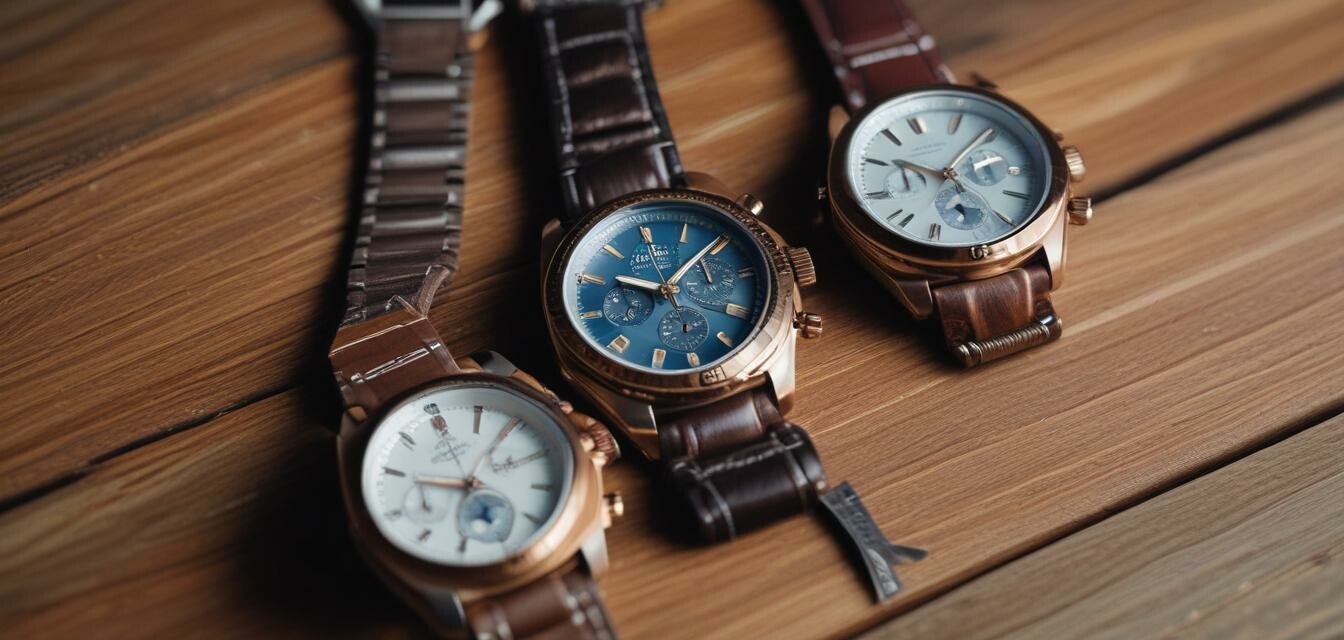
The rise of sustainable luxury watches in 2025
Key Takeaways
- 2025 sees a significant shift towards sustainable practices in the luxury watch industry.
- Many renowned brands are embracing eco-friendly materials and ethical production methods.
- Luxury watches are evolving to not just represent status, but also environmental consciousness.
- The trend is positively impacting consumer choices, promoting a more sustainable lifestyle.
- Innovation in materials and designs is revealing the potential of luxury watches in sustainability.
As we step into 2025, the luxury watch market is witnessing a fascinating transformation. The trend of sustainable luxury watches is rising, reshaping the way enthusiasts and collectors view timepieces. Luxury brands are stepping forward, not just to showcase their craftsmanship, but also to highlight their commitment to the environment.
Why Sustainability Matters
The luxury watch industry has long been associated with opulence and extravagance. However, as environmental issues become more pressing, both consumers and manufacturers are beginning to acknowledge the importance of sustainability. Sustainable luxury watches offer a unique blend of prestige and responsibility, addressing growing concerns regarding climate change and ethical practices.
Brands Leading the Charge
Several prominent brands are pioneering eco-friendly practices in their watch manufacturing processes. Below is a summary of some of these leading names:
| Brand | Eco-Friendly Practices | Notable Features |
|---|---|---|
| Breitling | Use of materials sourced responsibly | Water-resistant designs with recycled straps |
| Cartier | Commitment to sustainable development | Innovative designs featuring biocompatible materials |
| TAG Heuer | Integration of solar-powered movements | Watches made from recycled elements |
| Omega | Focus on ethical sourcing of materials | High-quality timepieces with longevity in mind |
| Hublot | Investment in sustainable luxury initiatives | Watches crafted with environmentally friendly alloys |
The Impact of Eco-Friendly Practices
The shift to sustainable luxury watches is not merely a trend but an essential part of brand identity for many companies. By adopting eco-friendly practices, brands can enhance their image while contributing to environmental preservation. Here’s how this impact is viewed:
- Consumer Awareness: More watch enthusiasts are gravitating towards brands that prioritize sustainability, leading to a shift in buying patterns.
- Innovation: The demand for sustainable materials is spurring innovation in design and manufacturing.
- Market Growth: The luxury watch market is poised for growth as sustainable practices attract a broader audience.
Challenges in the Sustainable Luxury Market
While the rise of sustainable luxury watches is exciting, challenges remain. Some hurdles include:
- Costs: Sustainable materials can be more expensive, affecting pricing.
- Supply Chain: Sourcing eco-friendly materials requires establishing new, secure supply chains.
- Consumer Education: There’s a need to inform consumers about the benefits of sustainable watches.
The Future of Sustainable Luxury Watches
Looking ahead, the sustainable luxury watch segment is expected to grow. Continued innovation in materials and production techniques will pave the way for even more eco-friendly advancements. Brands are recognizing that they must balance luxury and sustainability to appeal to modern consumers.
Conclusion
In conclusion, the rise of sustainable luxury watches in 2025 marks a significant shift in consumer behavior and industry practices. As brands strive to align with environmental initiatives, luxury will not merely be defined by aesthetic appeal but also by conscientious craftsmanship. For more insights into the shifting landscape of luxury watches, explore our News and Trends section and stay updated with the latest brand revelations and innovations.
Tips for Choosing a Sustainable Luxury Watch
- Research brands and their eco-friendly initiatives.
- Look for watches made with recycled materials.
- Consider brands that offer repair services to extend the life of your timepiece.
- Pay attention to ethical sourcing and production practices.
Pros
- Environmentally friendly materials reduce carbon footprint.
- Promotes ethical production practices.
- High quality and long-lasting design.
- Enhances brand credibility.
Cons
- Higher initial cost compared to traditional watches.
- Availability may be limited.
- Education gap among consumers regarding sustainable practices.

